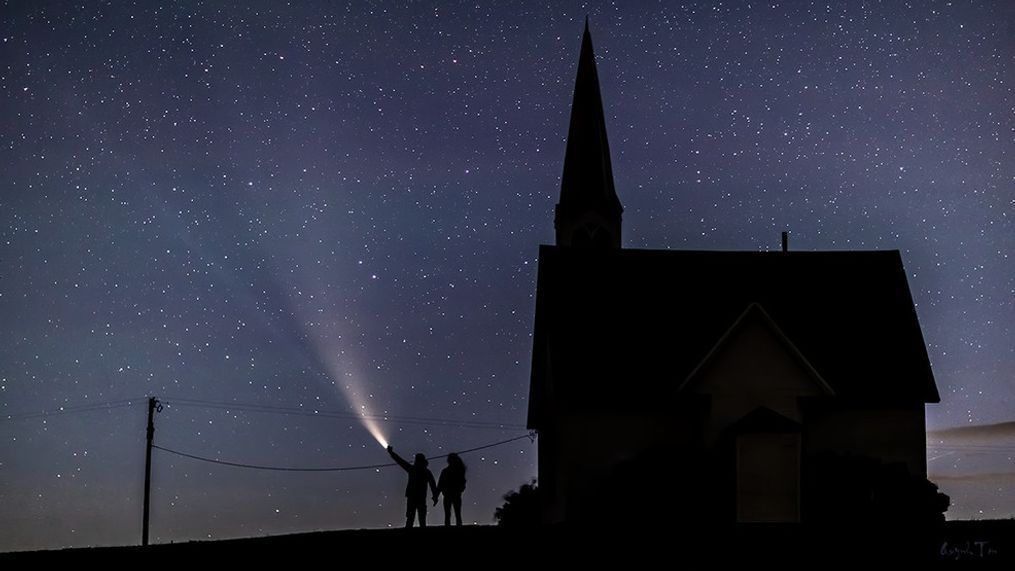Nice catch: Photographer gets creative with Comet NEOWISE

A local photographer spent days coming up with an idea for a perfect shot of Comet NEOWISE and I'd say they definitely hit the mark!
Quynh T. Ton lives in Seattle and spent days trying to get good shots of the comet around the city, with no real luck.
"With the amount of light pollution in the city, we could not capture an image of the comet with its long comet tail," Ton said in a post on our KOMO's Legion of Zoom Facebook photography group.
Instead, he took his search to Eastern Washington to find a place with less light pollution and an object small enough to see the scale of the comet.
"We thought of an old church in eastern Washington since we took many photos there before and it met the conditions needed for this photo," Ton said.
The first two nights were a bust though, as low clouds hung around and hid the comet as it as it approached the horizon.
MORE Comet NEOWISE photo galleries: July 20(50 photos) | July 17 (54 photos) | July 14 (73 photos)
But third night was a success, leading to a fourth night Sunday of even greater success!
"We decided to come back on the 3rd night where we could capture the comet in a way where it acts like it lights up the front of the church," Ton said. "Even though the picture was taken on the 3rd night as desired, we decided to come back the next night so we could add people to the photos. And here it is."
Ton said this photo was taken in one shot, and is not a composite image.
"Lot of planning and experience go along to capture this final image," Ton said.
And what a shot it was!
The comet is actually making its closest pass to Earth on Wednesday and can still be seen in the northern skies in the 90 minutes or so after sunset and later, but will be steadily fading as the days progress and the comet gets farther from the sun.
